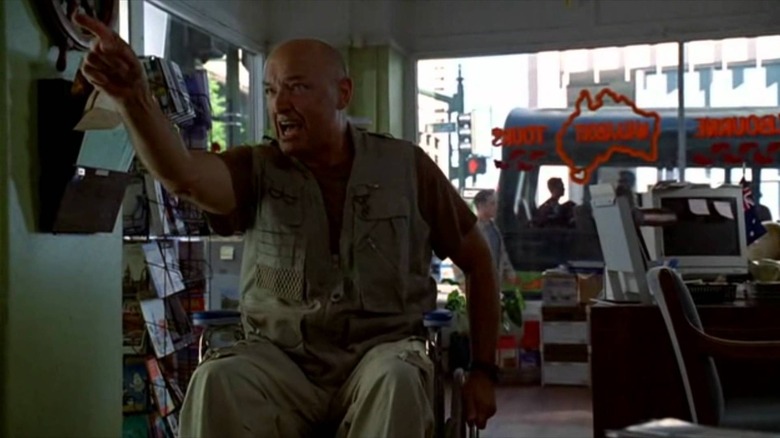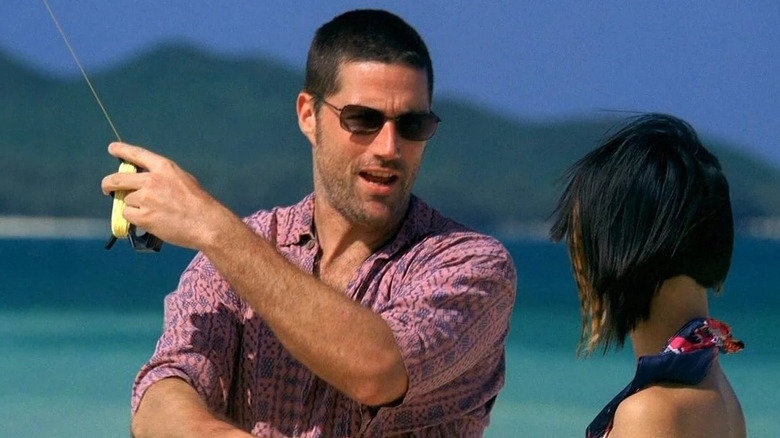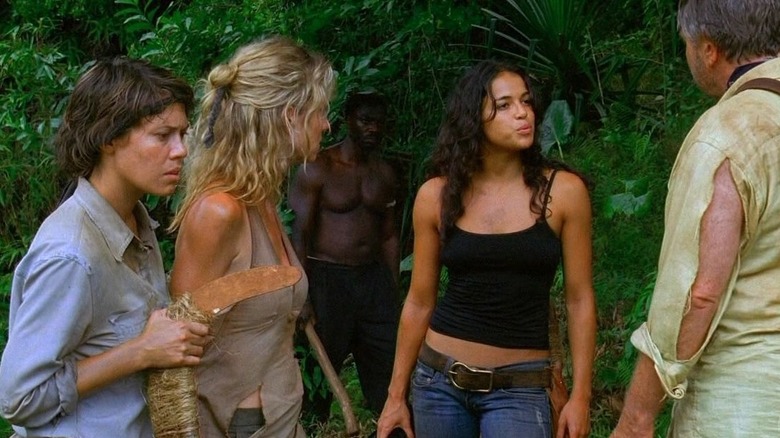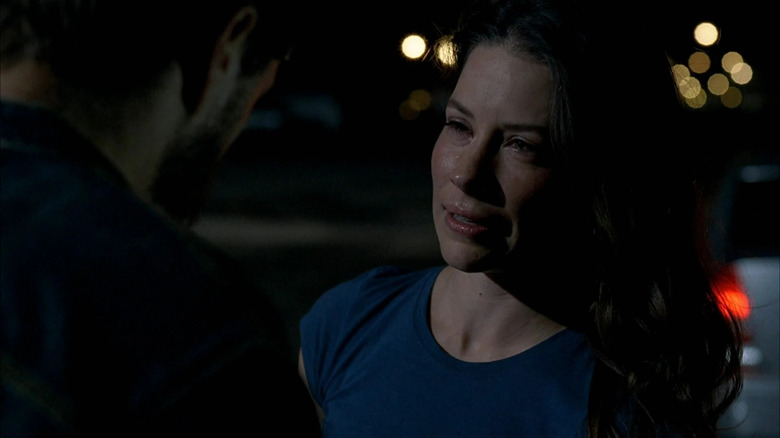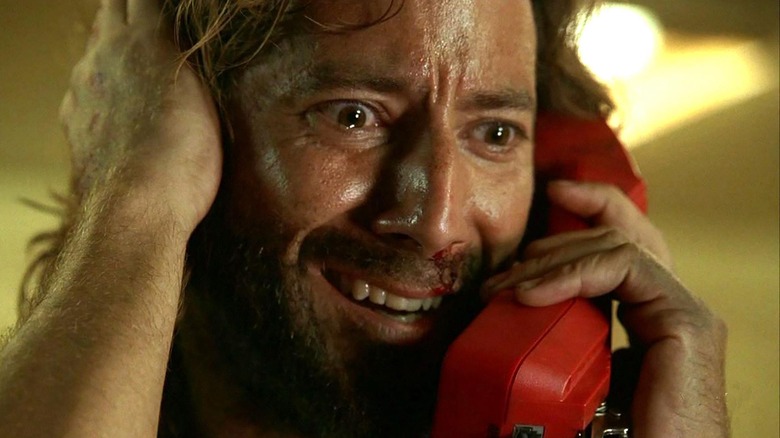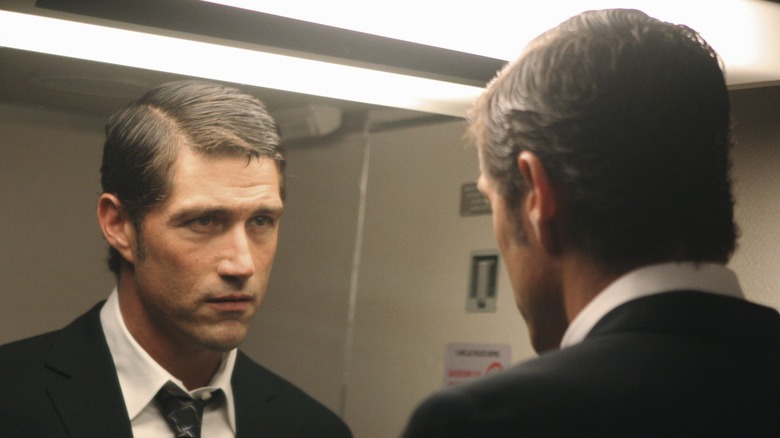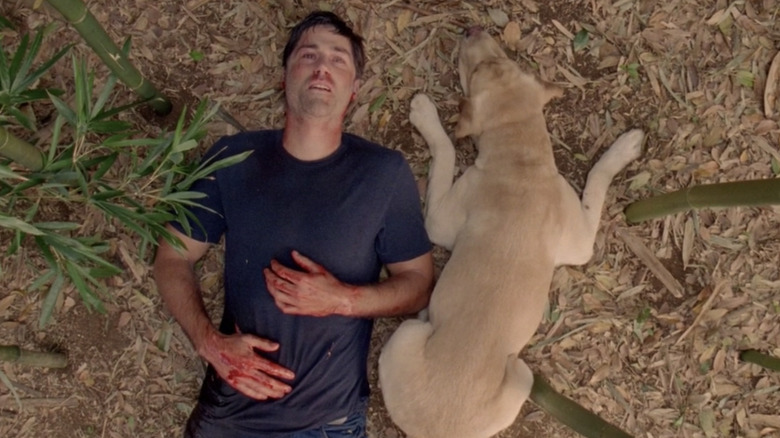Even Damon Lindelof Had A Problem With All Of Those Lost Flashbacks
One of the best parts of "Lost" season one was its flashback structure. This was a show with a massive cast, and having each episode give us a close look at a specific character's life helped to make them all feel special and compelling. The "Lost" writers understood how to play with our expectations, so season 1 was filled with flashbacks that radically reshaped our understanding of certain characters. Most notable is "Walkabout," the fourth episode of the series, which reveals in its final moments that John Locke (Terry O'Quinn) had been paralyzed from the waist down prior to the plane crash.
Even when it wasn't blowing our minds with any big revelations, the flashback structures still helped to deepen our understanding of each character and add context to their current struggles. If "Lost" had chosen to simply stick to the on-island storylines, the show would've been worse off for it.
But as "Orange is the New Black" would also struggle with years later, there's that inevitable problem that comes when every main character has already gotten one or two flashback episodes. Starting with season 2 of "Lost," and really getting out of control with season 3, there came this growing sense that the writers had already explored all they could with these flashbacks. By this point, what more could a Kate, Jack, or Locke-centric episode really tell us about them that we didn't already know? And considering how much mystery there was to unpack on the present-day island itself, the flashback structure seemed to viewers more like a convenient way for the show to stall the plot. It turns out that the show writers felt the same way.
Damon Lindelof explains
The reason the flashbacks felt like stalling was that they were, in fact, stalling. When "Lost" became a breakout hit within its first few episodes, ABC famously wanted to drag the show out for as long as they could, and showrunner Damon Lindelof and the other writers had to fight tooth and nail to let themselves have an end date to work towards. Whereas the network just saw the opportunity for endless profit, Lindelof understood that the show couldn't and shouldn't last forever.
"Whenever ABC would be like, 'Why do you want to end the show?' we were like, 'These flashbacks are finite,' you know? You can do, like, three flashbacks of Jack getting drunk and being self-destructive, or Charlie relapsing, or Kate running away from the marshal that is chasing her," Lindelof explained in a 2020 interview with Collider. "But ultimately with that stuff, the first one feels like an origin story because you're learning about that person for the very first time, but all the other ones feel like you're just kind of treading water ... we're seeing about eight chess moves ahead and it ain't gonna end pretty."
The breaking point was season 3, episode 9, "Stranger in a Strange Land," an episode whose flashbacks are dedicated to solving the grand mystery of what Jack's tattoos mean. It's not a terrible episode; it's just an episode where you can feel in your bones that the show is stalling for time. It's a filler episode so blatant, so frustrating, that it made even the ABC executives realize they needed to throw the writers a bone. An end date for the show was finally put in place, and soon the show would be able to switch up the flashback structure.
Bending the format when they can
In the meantime, before they could really shake things up with the season 3 finale, "Lost" contented itself in its first few seasons with the occasional one-off twist on the format. Season 2's "Maternity Leave" follows Claire (Emilie de Ravin) as she gradually regains her own lost memories. It's the rare case where the character is experiencing flashbacks along with the audience, learning her own history in real-time. It still follows the basic structure of a "Lost" episode, but it's different enough to throw some extra energy into the show.
Season 2 also gave us "The Other 48 Days," which is one long flashback covering the story of the other group of survivors on the island. By being one continuous, uninterrupted story, this episode is still considered one of the most unique and beloved installments in the series, even as nearly every character featured would eventually be written out of the show to some extent.
Maybe the biggest one-off format shift was with season 3's "Flashes Before Your Eyes." Instead of going back and forth between the island and a character's past, the episode instead uses the island story as a framing device for a longer, singular flashback for Desmond (Henry Ian Cusick). It's Desmond's second-best episode on the show, and one of the bright spots of season 3's plodding first half.
The writers themselves seemed to pick up on how well-received these episodes were, which might be what gave them the courage to switch things up long-term.
The best season finale ever
It was with the season 3 finale, "Through the Looking Glass," that the show shook everything up in a bold, unprecedented way. At first, it seems like a typical flashback episode following Jack during a rough period of his life; a strange choice for a finale, but otherwise okay. But as the episode goes on, the flashback storyline feels like something is increasingly off. After all, at what point in Jack's life had he ever been this distraught, and why are we only just now finding out about it?
It's only during the episode's final moments, where we see an off-island Jack meeting up with Kate (Evangeline Lilly), that things become clear: we've been watching a flash-forward, not a flashback. We now know that somehow, at some point, Jack and Kate manage to finally get off the island. It's a twist that works precisely because of how much time the show spent establishing the flashback pattern and structure. In hindsight the clues that this was all a flash-forward were obvious, but 70 episodes of established precedent helped disguise the twist in plain sight.
Following this finale, almost the entire fourth season followed the flash-forward structure. Instead of using the off-island material to inform the characters' present-day actions, they were used to give us intriguing hints as to where the characters would end up. Throughout the season we were made to wonder: what's going to happen to the characters who aren't getting flash-forwards? These questions were answered by the finale, but in typical "Lost" fashion, the answers only gave us more questions to grapple with.
Switching up the format (again!)
Although season 4 was the flash-forward season, it still didn't stick to that format the whole way through. In "Ji Yeon," the show basically pulled a reverse of the season 3 finale, by giving us an apparent flash-forward that's actually a flashback. The off-island material follows future Sun as she goes into labor, while what seems like future Jin races to the hospital to be there for the delivery. It's not until the end that we realize Jin's storyline is from before the plane crash, and he's rushing to the hospital for a work obligation. The final scene is a flash-forward with Sun as she visits Jin's grave, a chilling moment that raises two obvious questions: is Jin actually dead? If so, when and how?
But the real standout of season 4, of course, is "The Constant." Whereas Claire's season 2 episode was the first episode where a character experienced flashbacks along with the audience, "The Constant" is the first time the audience gets to stick to one character's consciousness as their mind, not body, travels through time. Poor confused Desmond keeps hopping back and forth (against his will) between 1996 and 2004, with no memories of anything that happened after the '96 timeline. The only way to stop this is to reconnect with his long-lost love Penny, leading to one of the most emotional finales of all time. "The Constant" is often considered the best episode of not just "Lost" but the whole 21st century so far, and it happened because of the writers' total willingness to keep playing around with the show's already-ambitious structure.
Switching up the formula (one more time)
Season 5 was "Lost" at perhaps its most straightforward. The plot itself was at its most ambitious and convoluted, but the show was now tackling it all with much-appreciated haste. The flash-forwards were over; several episodes returned to the standard flashback structure, whereas other episodes didn't use flashbacks at all. It was only in season 6 that "Lost" switched up the format again in a major way, with a controversial concept called flash-sideways.
At first, it seems like the hydrogen bomb the gang blew up in the season 5 finale created a parallel universe, and throughout season 6 we get to see alternate versions of the major characters' lives if the plane had never crashed. Instead of giving us context for the characters' present-day actions or creating some dramatic irony, these flash-sideways seem to only exist to give us a fun look into how the characters' lives could've played out if things had gone a little differently.
It was a strange, divisive format change, one that became even more divisive as it slowly became clear we weren't watching a parallel universe at all. As the finale made clear, we were watching the characters in the afterlife. Over the course of the final few episodes, these characters start remembering the events of their real lives, reconnecting with their loved ones, and gathering together in a church to prepare for whatever comes next.
A great ending to a great show
The conclusion to the flash-sideways storylines was a deeply emotional, cathartic finale that nevertheless enraged large portions of the fans, many of whom (incorrectly!) came to the conclusion that the characters had been dead throughout the entire six seasons. Even though Jack's father gave a whole speech near the end clarifying that what happened on the island was real, that wasn't enough to prevent this annoying misinterpretation of the "Lost" finale from being commonplace in pop culture.
Luckily, cooler heads have prevailed as time's gone by, and Damon Lindelof's other TV series have been so undeniably good that it's forced a lot of "Lost" haters to reconsider their original takes. Yes, "Lost" may have been frustrating at times; maybe those early seasons could've been tightened up a little, and some of those mysteries established could've been answered in a more satisfying manner. But it was also a consistently bold, inventive show that never stopped challenging its audience, even in its final moments. Specifically, it was with that season 3 finale that the show went from good to an all-time great: that was the moment the "Lost" writers responded to the complaints about the flashback structure, and they did it in the smartest, most exciting way possible.
